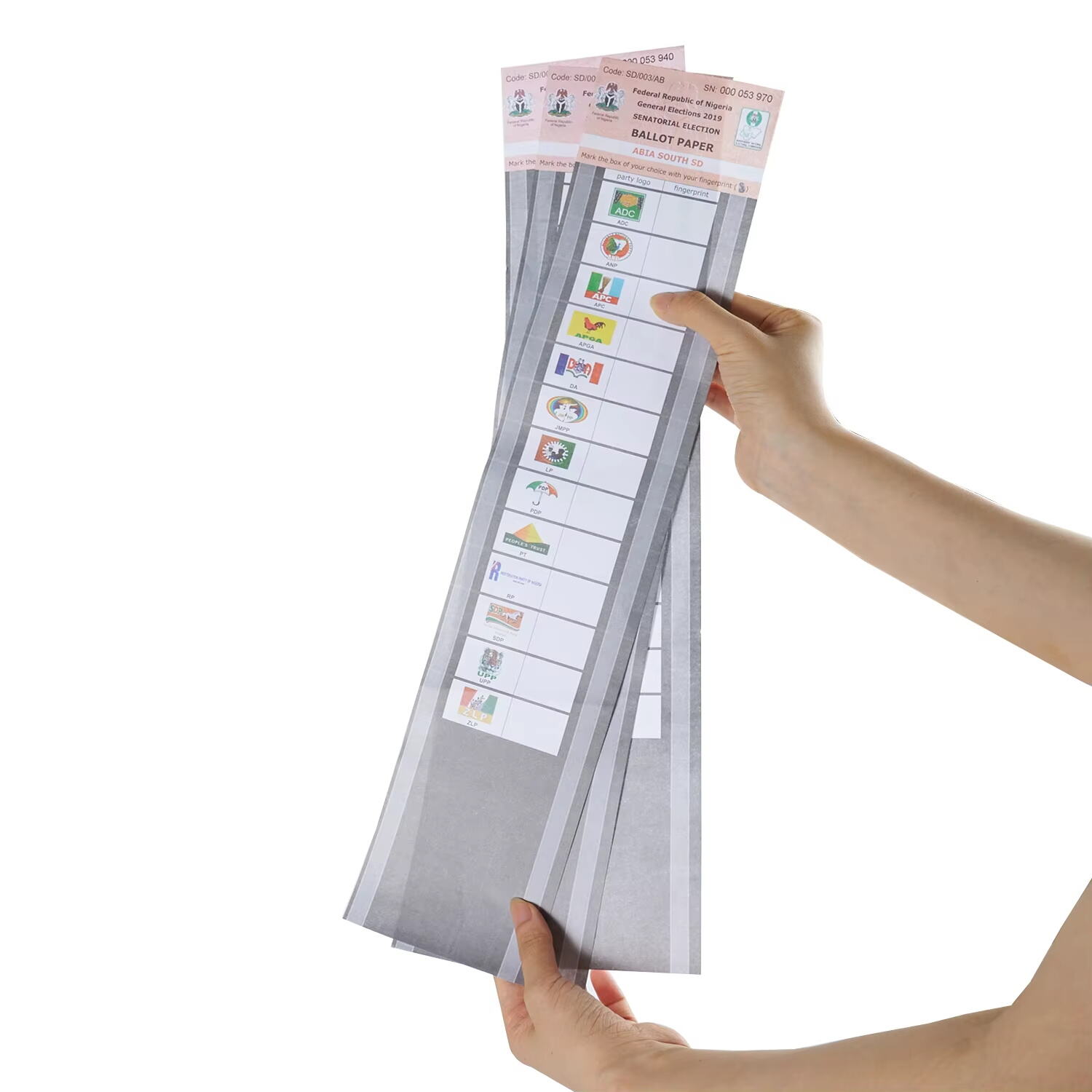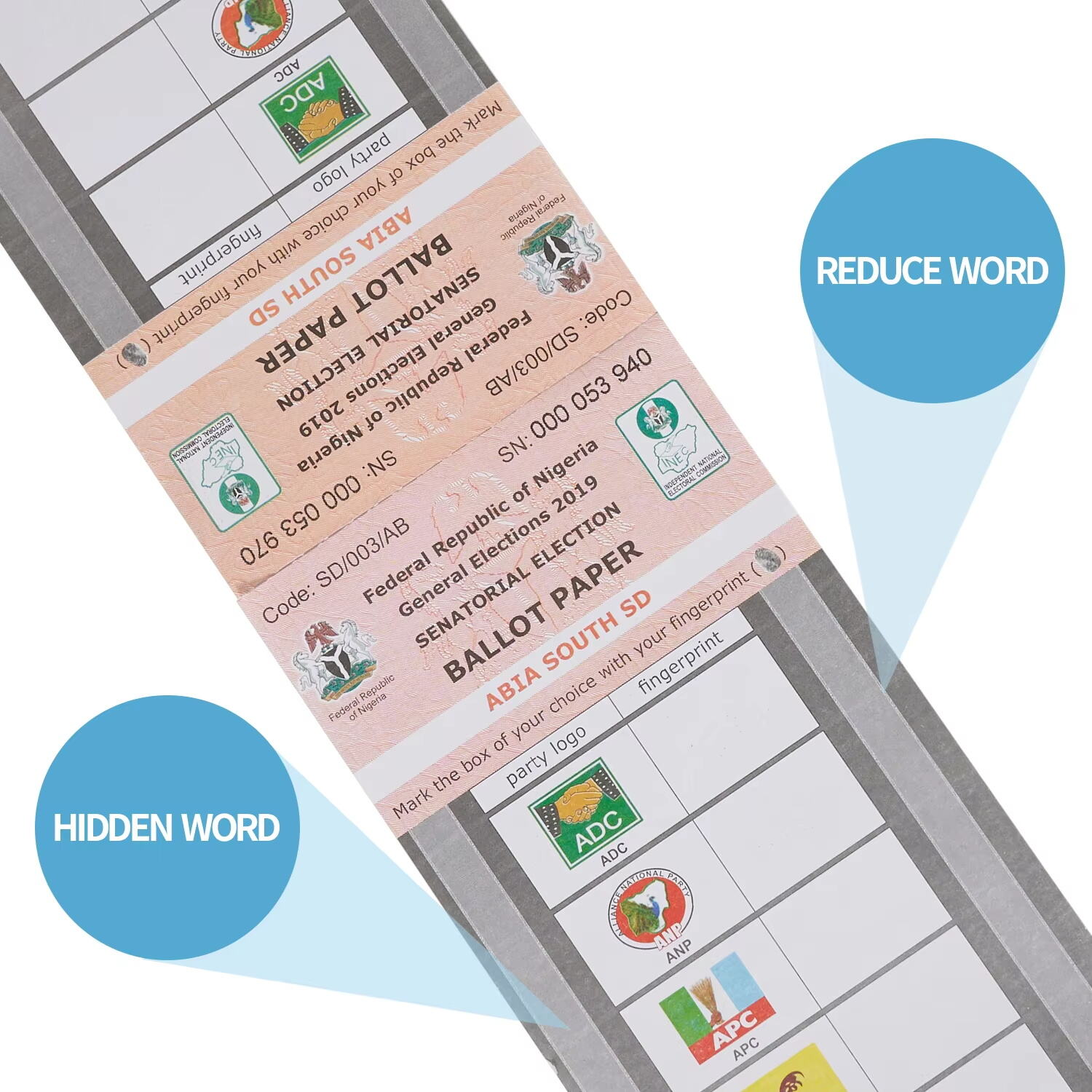RTL
Klicken, um zu aktivieren

Die Geschichte der Wahl begann vor Jahrhunderten, doch erst die Einführung standardisierter wahlschein veränderte die demokratische Teilnahme grundlegend. Während frühe Zivilisationen mündliche Abstimmungen oder physische Markierungen wie Steine verwendeten, entwickelte sich die schriftliche Stimmabgabe aus dem Bedürfnis nach Vertraulichkeit, Nachprüfbarkeit und Einheitlichkeit. Wahlzettel dienten als Bindeglied zwischen öffentlicher Entscheidungsfindung und privater Meinungsäußerung. Als Gesellschaften begannen, transparentere Wahlen einzufordern, etablierten sich Papierwahlzettel als weltweit akzeptierte Methode.
Heute sind die wahlschein ist mehr als nur ein Medium, um eine Wahl abzugeben. Es entwickelte sich durch technologische Fortschritte, internationale Wahlstandards und zunehmende Bedenken hinsichtlich Sicherheit und Zugänglichkeit. Seine Verwandlung spiegelt die politischen, technologischen und kulturellen Entwicklungen weltweit wider. Von einfachen handgeschriebenen Zetteln bis hin zu sicheren, maschinenlesbaren Formaten definieren Wahlzettel weiterhin, wie Bürgerinnen und Bürger mit der Demokratie interagieren.
Das Stimmblatt hatte seinen ersten bedeutenden Auftritt im antiken Rom, wo Bürger Wachstafeln oder Pergament zur anonymen Abstimmung verwendeten. Erst im 19. Jahrhundert wurden moderne Stimmzettel jedoch stärker standardisiert. Länder wie Australien und das Vereinigte Königreich setzten sich an die Spitze mit bedruckten Stimmzetteln, die ein einheitliches Verfahren für Wahlen ermöglichten und unzulässigen Einfluss verringerten.
Diese Entwicklung hin zu strukturierten Stimmzetteln schuf das Fundament für viele Demokratien der heutigen Zeit. Die Idee, für jeden Wähler identische Stimmzettel zu drucken, gewährleistete Fairness, Einheitlichkeit und eine Reduzierung von Druck auf die Wähler. Indem mündliche Abstimmungen und informelle Methoden ersetzt wurden, wurden Stimmzettel zu einem Symbol für Wahlrechtslegitimität.
Die geheime Wahl, ermöglicht durch standardisiertes Stimmzettel-Papier, war ein Meilenstein. Länder erkannten schnell die Notwendigkeit der Privatsphäre im Wahlprozess. Dies führte zur weiten Verbreitung einheitlicher Stimmzettel-Papiere in verschiedenen Regionen, wobei jede Region einzigartige Elemente integrierte, die zu ihrem soziopolitischen Umfeld passten.
Egal ob in mehreren Sprachen gedruckt oder mit Symbolen für Analphabeten gestaltet, das Stimmzettel-Papier passte sich den lokalen Gegebenheiten an. Das Ziel blieb dasselbe – sicherstellen, dass jeder Bürger selbstbewusst und vertraulich seine Stimme abgeben konnte.

Die Entwicklung des Stimmzettel-Papiers war eng mit der Drucktechnologie verbunden. Vom Letterpress- bis zum Digital- und Offsetdruck haben Verbesserungen sauberere und sicherere Stimmzettel ermöglicht. Moderne Stimmzettel enthalten heute oft Mikroschrift, unsichtbare Tinte und Farbcodierungen, um die Sicherheit zu erhöhen.
Die Qualität des Stimmzettels hat sich ebenfalls verbessert. Er muss nun dem Reißen, Verschmieren und der Vervielfältigung widerstehen. Spezielles Papier mit eingearbeiteten Fasern oder Wasserzeichen wird eingesetzt, um dem wachsenden Bedarf an manipulationssicheren Stimmzetteln gerecht zu werden. Innovationen in der Papierherstellung beeinflussen weiterhin die Durchführung von Wahlen.
Viele Wahlsysteme verwenden mittlerweile maschinenlesbare Stimmzettel. Diese Stimmzettel, die für den Einsatz mit optischen Scannern konzipiert sind, behalten die haptischen Vorteile der traditionellen Stimmabgabe, erhöhen gleichzeitig aber die Genauigkeit. Jeder Stimmzettel wird mit präzisen Markierungen und Kalibrierungscodes bedruckt, die es Scannern ermöglichen, die Stimmen mit minimalem Fehleraufkommen zu erfassen.
Dieser hybride Ansatz hilft dabei, traditionelle und digitale Systeme miteinander zu verbinden. Der Stimmzettel bleibt weiterhin zentraler Bestandteil des Prozesses und stellt auch bei technologischer Unterstützung der Auszählung und Fehlererkennung eine nachvollziehbare Stimmabgabekette bereit.
Trotz weltweiter Anwendung unterscheidet sich das Stimmzettel-Design je nach Land stark. Einige Länder verwenden vertikale Layouts, während andere horizontale Formate bevorzugen. Die Einbeziehung von Fotos, Logos oder Parteifarben ist in mehrsprachigen oder multikulturellen Gesellschaften üblich, um Wählern die Identifizierung zu erleichtern.
Diese designbedingten Unterschiede spiegeln lokale Anforderungen und kulturelle Erwartungen wider. Dennoch bleibt der Zweck des Stimmzettels stets der gleiche: Wahlmöglichkeiten klar darstellen und sicherstellen, dass jede Stimme zählt. Die Standardisierung des Layouts innerhalb eines Landes trägt dazu bei, Fehler bei der Stimmabgabe zu reduzieren und die allgemeine Zugänglichkeit zu verbessern.
Bei der Gestaltung von Stimmzetteln müssen auch Wähler mit Behinderungen oder eingeschränkter Literalität berücksichtigt werden. Viele Wahlbezirke bieten daher Stimmzettel mit taktilen Elementen, Braille-Übersetzungen und Großschriftvarianten an. Mehrsprachige Stimmzettel stellen sicher, dass Personen, deren Muttersprache nicht die Amtssprache ist, ihre Wahlmöglichkeiten verstehen können.
Diese inklusiven Merkmale verdeutlichen die zunehmende Bedeutung von Wahlzetteln bei der Förderung einer gerechten Beteiligung. Das Augenmerk liegt nicht nur auf der Gestaltung, sondern auch darauf, dass sie für alle Bevölkerungsgruppen bedienbar sind.
Da Wahlbeeinflussung zu einer globalen Herausforderung wird, wurden Wahlzettel mit Sicherheitsmerkmalen ausgestattet. UV-reaktive Elemente, Barcodes, holografische Siegel und sichere Druckfarben sind heute üblich. Diese verhindern Nachahmung und Manipulation.
Jeder Wahlzettel kann außerdem eine eindeutige Seriennummer oder Mikroperforationen aufweisen, die die Echtheit bestätigen. Solche Verbesserungen gewährleisten, dass jede Stimme vor betrügerischen Versuchen geschützt ist.
Die Entwicklung des Stimmzettels beschränkt sich nicht auf seine physische Form. Auch die Art und Weise, wie er gedruckt, gelagert und verteilt wird, hat sich weiterentwickelt. Nur akkreditierte Einrichtungen dürfen offizielle Stimmzettel drucken, und jede Charge wird unter strenger Überwachung registriert, gezählt und transportiert.
In einigen Ländern werden blockbasierte Tracking-Systeme und GPS-gesteuerte Logistiklösungen erforscht. Diese modernen Sicherheitsmaßnahmen stärken die Integrität des gesamten Wahlprozesses.
Mit zunehmender Umweltbewusstheit bewegen sich Wahlbehörden hin zu ökologisch verträglichem Stimmzettelmaterial. Wiederverwertbare Materialien, biologisch abbaubare Tinten und energieeffiziente Produktionsmethoden werden weltweit eingesetzt. Das Ziel ist es, die Integrität der Stimmzettel beizubehalten und gleichzeitig deren ökologischen Fußabdruck zu reduzieren.
Diese Praktiken machen Wahlen nachhaltiger, ohne die Qualität zu beeinträchtigen. Regierungen legen mittlerweile Nachhaltigkeitskriterien in Beschaffungsverträgen für Wahlzettel fest, um umweltfreundliche Praktiken zu fördern.
Wahlzettel können erheblichen Abfall verursachen, insbesondere in großen Ländern. Neue Ansätze wie Druck nach exakter Stückzahl und effiziente Verpackung zielen darauf, Überproduktion und Ausschussraten zu reduzieren. Sichere Schredder- und Recyclingverfahren stellen sicher, dass benutzte Wahlzettel verantwortungsvoll entsorgt werden.
Diese Strategien zeigen, wie sich Wahlzettel weiterentwickeln, um den globalen Nachhaltigkeitszielen gerecht zu werden. Die Schnittstelle zwischen Sicherheit und Umweltbewusstsein treibt mittlerweile Innovationen bei Wahlmaterialien voran.
Mit dem Aufkommen digitaler Wahlsysteme vermuten viele, dass Stimmzettel obsolet werden könnten. Dennoch bevorzugen die meisten Demokratien weiterhin eine physische Papierspur für Nachzählungen und Prüfungen. Hybridsysteme, die digitale Bequemlichkeit mit physischer Verifikation verbinden, werden immer verbreiteter.
In diesen Modellen dient der Stimmzettel als Sicherheitskopie. Wähler können ihre Auswahl auf einem Touchscreen treffen und erhalten anschließend einen ausgedruckten Stimmzettel, der vor der Abgabe überprüft werden kann. Dieser zweischichtige Ansatz vereint Zuverlässigkeit mit Effizienz.
Die Rolle von Stimmzetteln in globalen Wahlsystemen wird kontinuierlich neu definiert. Während elektronische Systeme an Bedeutung gewinnen, bleibt das Verlangen nach Transparenz und das Vertrauen der Wähler weiterhin von höchster Priorität. Der Stimmzettel bietet etwas, das kein Algorithmus vollständig ersetzen kann: haptischen Nachweis der Teilnahme.
Eine fortlaufende Forschung und öffentliche Diskussion sind notwendig, um sicherzustellen, dass Stimmzettel verantwortungsvoll weiterentwickelt werden. Die Integration biometrischer Wählerverifikation, digitaler Signaturen und sicherer physischer Stimmzettel wird voraussichtlich die Zukunft der Wahlen prägen.
Stimmzettel bieten eine greifbare und nachvollziehbare Spur für jede abgegebene Stimme. Sie gewährleisten Transparenz, verringern das Risiko digitaler Manipulation und stärken das öffentliche Vertrauen in den Wahlprozess.
Zu den Sicherheitsmerkmalen gehören UV-Tinten, Mikrotexte, Barcodes, Hologramme und spezielle Fasern, die in das Papier eingearbeitet sind. Diese verhindern Fälschungen und unbefugte Vervielfältigung.
Ja. Viele Wahlbehörden verlangen mittlerweile, dass Stimmzettel aus recycelten oder nachhaltig bezogenen Materialien hergestellt und mit umweltfreundlichen Druckfarben gedruckt werden.
Während digitale Abstimmungssysteme sich ausbreiten, bleibt das Stimmzettelwesen weiterhin unverzichtbar, um eine überprüfbare Aufzeichnung zu gewährleisten. Hybridsysteme, die beide Technologien nutzen, gelten derzeit als die sicherste und transparenteste Option.